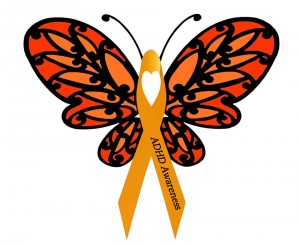Hearing that your child has been diagnosed with attention deficit hyperactivity disorder (ADHD) isn’t easy news to receive.

attention deficit hyperactivity disorder (ADHD)
But you aren’t alone; a recent study by the CDC found that about 11 percent of children in America have been diagnosed with ADHD. You won’t be able to help your child with every challenge ADHD throws his way, but there are many home changes you can make that will help. Here are four ways to make your home more ADHD-friendly for your child:
Eliminate the presence of electronics in your child’s bedroom. Playing video games and watching television in the same room where he sleeps can actually hinder your child’s sleep quality. Make his room a place to relax and unwind from the stresses of the day. Decorate with soothing earth tones and even be especially selective with artwork: a peaceful farm scene creates a calmer mood than a raging ocean storm.
Develop and maintain a daily routine. Keep a list of chores (or try a classic chore wheel!) to help him track his daily responsibilities, and even create a reward system as you see consistent success. Helping create strong organizational skills makes a world of difference for children with ADHD, and eventually the routines will become habit. Not only will you help hone his organization and planning habits, he’ll get a self-esteem boost from being able to stay on top of his duties.
Help him find his special talent or passion. Self-esteem issues are common in both children and adults with ADHD, so help him discover a positive skill to focus on. If he’s great at basketball, get him involved with a team. Is he a piano lover? Get him lessons! You’ll be providing him with not just the opportunity to be more social with his peers, but also a way to feel confident in front of them. A productive hobby can also be a great outlet to work out his frustrations from the day; maybe he struggled in math today, but he came home and really nailed that recital piece he’s been working on! With the numerous challenges in his daily life, it’s important to let him nurture a skill he’s both good at and passionate about.
Consider adopting a dog. Yes, that’s right. Owning a pet has actually been proven to have both physical and mental health benefits. Dogs specifically can be especially wonderful companions for those afflicted with ADHD. They’re great playmates to help burn off excess energy, can help develop responsibility skills, and best of all, they can be a special kind of support system. Dogs are nonjudgmental by nature and love unconditionally, and can become a trusted confidante and comfort on your child’s most challenging days. Think about it: is there anything quite as soothing as the, “I’ll love you forever!” look your pup gives you every time you walk through the door?
It can be difficult to know how to help your child after an ADHD diagnosis, but it’s important to focus on the things you can control. Making your home an organized, calm, and encouraging place to be is a great place to start. Take each day as it comes, and remember that your most important role is supporter!
Vee Cecil is a personal trainer and wellness coach who writes about all things health-related on her blog. She currently lives in Kentucky with her husband and two children.




